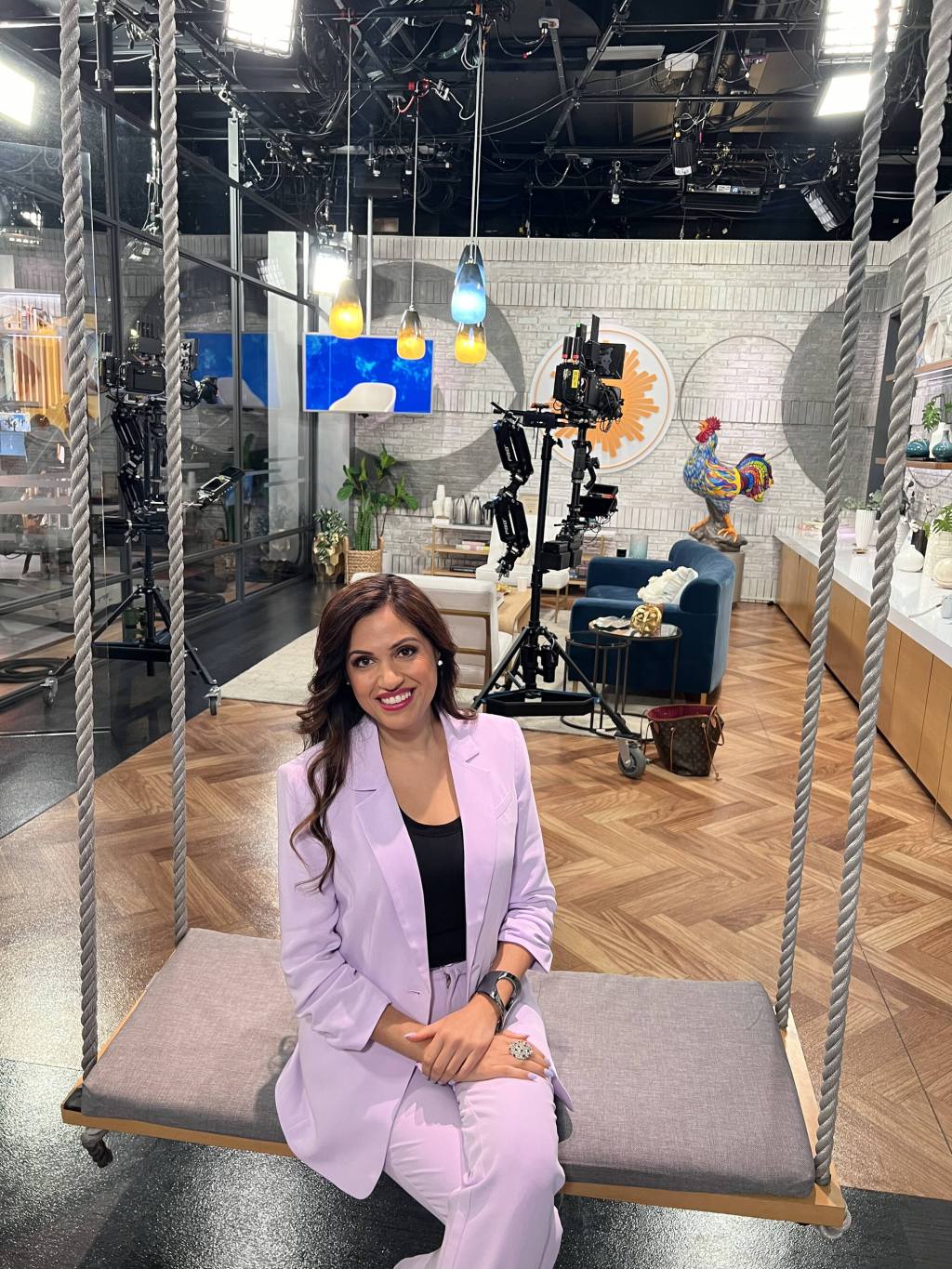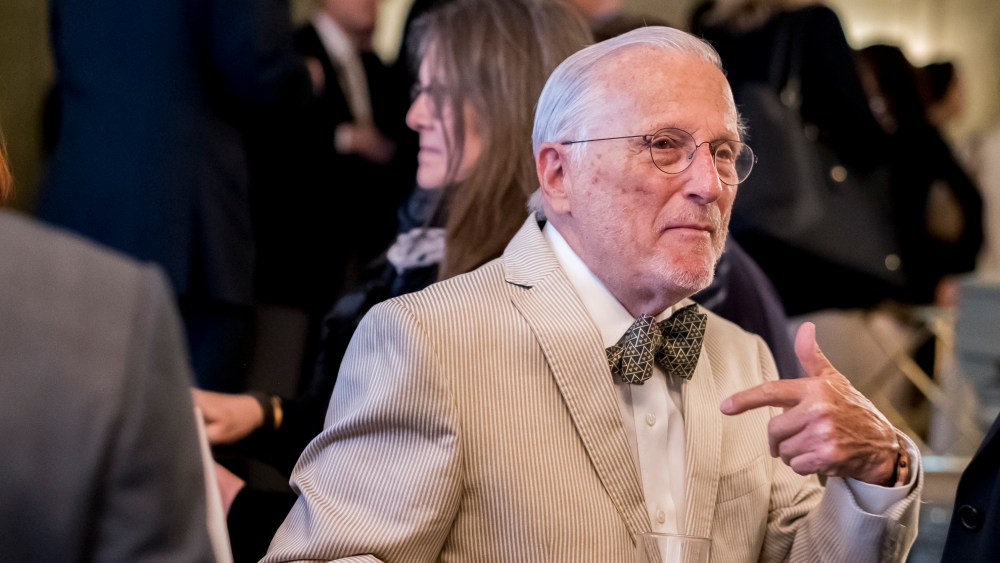For many people, “tomorrow doesn’t exist.”
So says Dr. Sue Varma, a New York-based psychiatrist, cognitive behavioral
therapist, and clinical assistant professor of psychiatry at New York University Langone Health.
She’s addressing how in a world rife with violence, political divisiveness and uncertainty, people are turning pessimistic, stressing out and increasingly grappling with mental health issues.
“Those factors that helped mitigate and alleviate some of the stress in our life i.e. social connection, spending time with community, civil engagement or religious services — all of that has trended down,” said Varma.
In a most timely fashion, Varma’s first book, “Practical Optimism: The Art, Science and Practice of Exceptional Well-Being,” has just been published by Penguin Random House. She presents “the eight pillars of practical optimism,” which include expressing and releasing emotions to increase energy, mood, memory, concentration and overall health; becoming a problem-solver; challenging negative, self-destructive thoughts and behaviors, and warding off mental clutter and worry. It’s a pragmatic, realistic roadmap for developing self-worth and confidence, and getting greater fulfillment out of life.
Varma has more than two decades of private practice experience including treating survivors of the 9-11 terrorist attacks and others dealing with trauma, stress management, fallout from the pandemic, and relationship issues. In the following Q&A, she discusses how the heaviness of world affairs is shaping people’s lives and attitudes toward money, shopping, “doom spending” and developing an optimistic approach to lead a fulfilling life.

WWD: As a psychiatrist with many years of experience, what are you seeing in people, generally, that’s different from the past, in terms of mental disposition?
S.V.: I’m seeing a lot of pessimism and understandably so. People are feeling numb, desensitized. They feel the future looks bleak. Surveys shows most people, even those who have lived through some really difficult times including World War II, the Great Depression, the Vietnam War, the Korean War, will hands-down say that now is a most difficult time. And it’s not surprising, especially for many young people. They are looking at climate change, war, inflation, and asking, “will I be able to achieve the basic milestones in life? I don’t see myself getting married, buying a house, or having children. With the way the world is right now why would I? Why would I bring a child into this chaotic world?”
Kids never had so much pressure. I may see a 16-year-old applying to colleges and telling me there’e no safe space to go. They feel they’re competing with their peers so they cannot open up to them. Their parents, coaches and teachers want them to succeed, and they are collapsing underneath the pressure of this. Plus, they spend an enormous time online managing their online reputations and identities. Social connections come through that. And for some young folks, their digital use is coming at the expense of sleep, exercise, friendships, all of which we know to be scientifically (proven) important for one’s mental health.
WWD: What about the pressures parents feel?
S.V.: There is immense pressure on parents to raise kids to be not only academically successful but also to thrive in a social emotional capacity. Parents are also feeling burnt out. They’re spending an inordinate amount of time on their children at the expense of their own hobbies and friendships. At no point in history did parents have this much stress and responsibility for raising not only happy, healthy, well-adjusted but also successful children.
WWD: Is the so-called midlife crisis a crisis that’s spreading?
S.V.: There is a crisis in midlife. For example, women in their 40s are feeling very lonely, and a large number of them end up on anti-depressants for any number of reasons, be it a shift in hormones or rediscovering their purpose. Some feel as if they have lost friendships in the busyness of being a part of what is called the “sandwich generation” — taking care of elderly parents while also taking care of young children. Then there are empty-nesters experiencing a transition in identity.
I’m also seeing a large number of people above the age of 65 living alone which causes loneliness. But we are experiencing a loneliness crisis throughout the population. Its health impact is worse than obesity with respect to morbidity and mortality. Loneliness is equivalent to smoking 15 cigarettes a day. Transitions are hard in general, but then when you add the mix of all of the uncertainty, fear of what’s happening in the world, not feeling we can trust our leaders, and not feeling financial security, all of this plays a big part.
WWD: Retailers and brands want to know how the world we live in affects consumer behavior. What would you tell them?
S.V.: I’m seeing a lot of people wanting to live for the moment and that might be what I call “doom spending.” If I don’t have tomorrow what I have today, why not just spend it now? We see young people experiencing a lot of pressure to keep up and therefore are splurging with expensive experiences or luxury goods, but not having the means to otherwise support themselves, or create a future that is financially sustainable. In fact, studies show that optimists are more likely to put away money for retirement and savings. In the long run, optimists are wealthier. They are also more likely to get a job promotion. They are more productive at work, more engaged on the job, and have less burnout…Yes, while pessimism can lead to a form of retail therapy in the short run — splurges — in the long run, it will deplete your savings, lead to more debt and more mental health trouble. We know that people with financial problems often experience depression and anxiety and then also don’t have the means or the bandwidth to get help.
WWD: How would you say consumer behavior changes as someone comes out of depression, or turns optimistic?
S.V.: We start to feel more hopeful again. We start to plan for our future and start to make investments in ourselves. When our mood is better we may also start to feel more confident and as a result, decide to apply for a job we always wanted. We may decide that we want to dress professionally, so we’re more likely to be spending for that professional look. Or deciding to put money away in savings towards any number of goals, for traveling, dining or other experiences, or even larger goals. It could be retirement, buying a house, or remodeling the home, anything that is a reflection of building and growing. Pessimism makes us act passive and feel paralyzed. Severe pessimism usually does not go hand-in-hand with spending for the long term.
Optimism leads to this idea of “broaden and build,” which says I have a future and investing in it. I’m going to take care of my health. I’m going to take care of my money. Optimists are much more likely than pessimists to save and build, and have hopes, dreams and goals, and make the effort to realize them — and become repeat customers. Optimism is about restoring hope and faith in ourselves, in the world and in humanity, and as a result, investing in all three.
WWD: Altering one’s mental state isn’t just about looking at the bright side. So what does practical optimism involve?
S.V.: In no way am I telling someone to just look on the bright side without understanding all of the challenges they are contending with. I give people lots of tools and resources, so they can help (attain) a mind shift to feel safe, and take back agency and control in their lives whether by being very intentional about how they spend their time, who they choose to spend time with, and which key health habits they invest in, for example, therapy, exercise or prevention.
WWD: In your book you discuss the four Ms of mental health — movement, mastery, meaningful engagement and mindfulness. Can you explain this?
S.V.: Movement is any kind of exercise — a 10- to 15-minute burst of walking, taking the stairs, a weight class, a yoga class, anything that gets the heart beating faster. It’s really just getting out of your chair, and could be as simple as stretching, mats, weights, physically moving your body.
To experience mastery, you don’t have to be a master. You just have to be willing to commit to something that gives you joy and pleasure, while also learning. It could be pottery, golfing, gardening — you name it.
Mindfulness is about just doing something single-minded. It could be a one-minute meditation. Just do one thing at a time.
Meaningful engagement is taking the time to connect with people on a deeper, more authentic level. This means putting your phone aside. This means being vulnerable, sharing and making an effort to see people in person.



